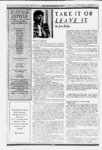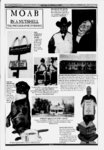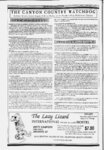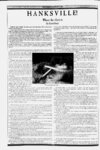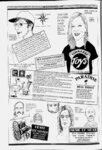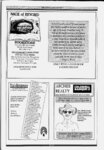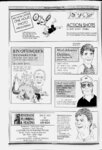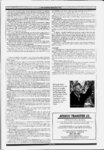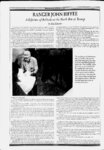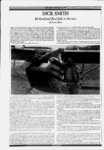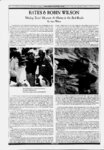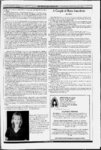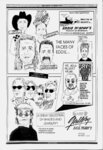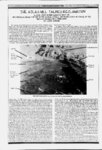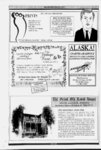| OCR Text |
Show WARD ROYLANCE of Perseverance The Power By Barry Scholl Ward Roy lance straddled two eras in One foot southern was firmly planted in the traditional when era, everything in America-includin- g adventure tourism, corporate expansion and mineral at an expbration-wa- s expanding unparalleled pace. The other foot was shod in a kind of Postmodern sandal Having worked as an employee of the Utah Travel Council first embracing and later shunning their brand of industrial tourism, he began, very early on, to advocate a softer, form of visitation. By the time I came to know Waid, he was firmly in what author quieter Ray Wheeler described as a "hippie dropout phase." To say that he advocated leaving nothing but footprints is true; what is not immediately apparent, though, is how large and enduring that footprint turned out to be. Although he was bom in Oregon and lived in Idaho for his first few years, Roy lanee was essentially a Salt Lake native. Like others who grew up in the shadow of the Wasatch Mountains during the late 1920s and early 1930s (Wallace Stcgner springs immediately to mind), Roy lance developed a fierce love for the gashed canyon systems of the Salt Lake Utah-particular- road-buildin- then-prevaili- Utah-touris- ly m. g, ng a couple of years ago down into the desert country? The one you didn't care to go on? Well hardly anyone has ever been down there but there is really more to see than anywhere else in the state. Slowly but surely people will learn about that section and want to go there on trips. That's where I'd like to come in. "On a 'roughing-i- t' trip like it would have to be (lack of improvements, bad roads, no towns, etc.), if just a couple of people went in their car they'd have more trouble than enjoyment; they'd ruin their car on the bad roads, probably get lost, run out of water or gas, and so on. So I think a group of maybe 8 or 10, going together in a special bus with a guide and all the equipment, food, provisions, provided would solve the situation. 10 people at $15.00 per day for 7 days ain't hay." This is the vintage Ward: full of determination and big dreams. Within just a few years, tourism he espoused so he'd rue his efforts to promote exactly that kind of large-scarife life seemed to him still when with possibilities. But enthusiastically that summer, le during the 1940s and '50s, his enthusiasm for Utah's natural wonders was practically Ward Roylancc and friends at his home in Torrey, Utah. Valley and spent his afternoons, weekends and summer vacations wandering through alpine forests under crags of granite. In 1942, he visited Dead Horse Point for the first time and his grand obsession with the "Enchanted Wilderness," as he later called the Colorado Plateau, was bom. Impressed with the Work Progress Administration's brand-ne1941 edition of Utah: A Guide to the State, the was soon immersed in the scientific and popular literature of southern Utah, but found his studies interrupted by his enlistment into the Army as an accountant and stenographer. Roylance remained in the armed forces for the duration of World War II, traveling extensively throughout the United States and Europe. He was stationed in Austria during the summer of 1945, just as the war was coming to an end. For the first time in years, he had leisure time to recall that first trip to southern Utah. With particular fondness, he recollected the play of shadow on the k whalebacks and the wonderful feeling, since shared by many, of isolation and peace. In his privately published memoir, The Enchanted Wilderness: A Red Rock Odyssey, he reprinted a letter written during that summer to his brother, Darrell, proposing the two establish a guide service in southern Utah. w combustible, it was so infectious. By 1992, when I came to know Ward personally (as opposed to through his writings, which is how many came to know him), he had changed. Almost 50 years of watching his favorite places developed; of witnessing a series of dreams almost catch fire before sputtering out and being extinguished by public indifference and government hostility; of seeing places he loved, beginning with Salt Lake and later including southern Utah, overrun-a- ll this led to a crisis. In her book little Town Blues, author Kaye Ringholz chronicles Roy la nee's rage in the early '70s when he discovered potash settling ponds being constructed within sight of Dead Hose Point, one of his favorite places. So far as Roylance was concerned, that kind of intrusion had no place within sight of a state park. Jobs or no jobs, it was inconceivable to him that such an eyesore had been allowed without extensive public input and a thorough environmental study. red-roc- "Did I tell you how I figure? Do you remember the trip Byron, Bill, Kenny and I took The loss of Dead Horse Point (and Ward in is his customarily dramatic way saw the arrival of the pools not just as a visual scab, but a ruination as keenly felt as the drowning of Glen Canyon or the paving of the Butt Trail) was a turning point Already smarting from the failure of his Enchanted Wilderness Association (EWA), in 1976 he and his wife, Gloria, gave up on urban living and moved to Torrey. The two had just been forced to sell their So Marla leaves We're open year-roun- d, we now CAMPING SHOWERS GASPROPANE 4x4 RENTALS SCENIC FLIGHTS MAPS BOOKS INFORMATION SHOWERS GENERAL STORESNACK BAR ICE COLD BEER. POP FIREWOOD charbroil our burgers, and we're happy as blue birds the spring to be here. in COME VISIT! me, business off, my chauffeur quits, my Miss Universe Pageant is x 4, - . NEW OWNERS a bust, and the Apple is making me crazy. So say to myself, TRUMP, you Big I need to get back to Nature. So here am, eating charbroiled burgers and I swilling beer. I I is may never leave. ?$:,?- - |

